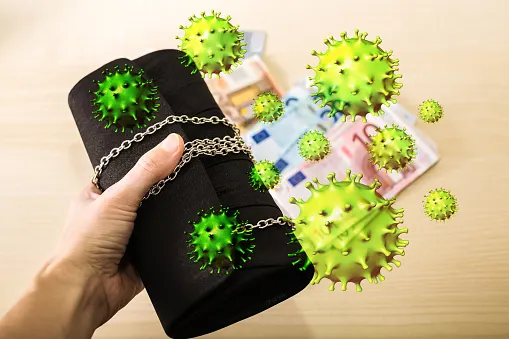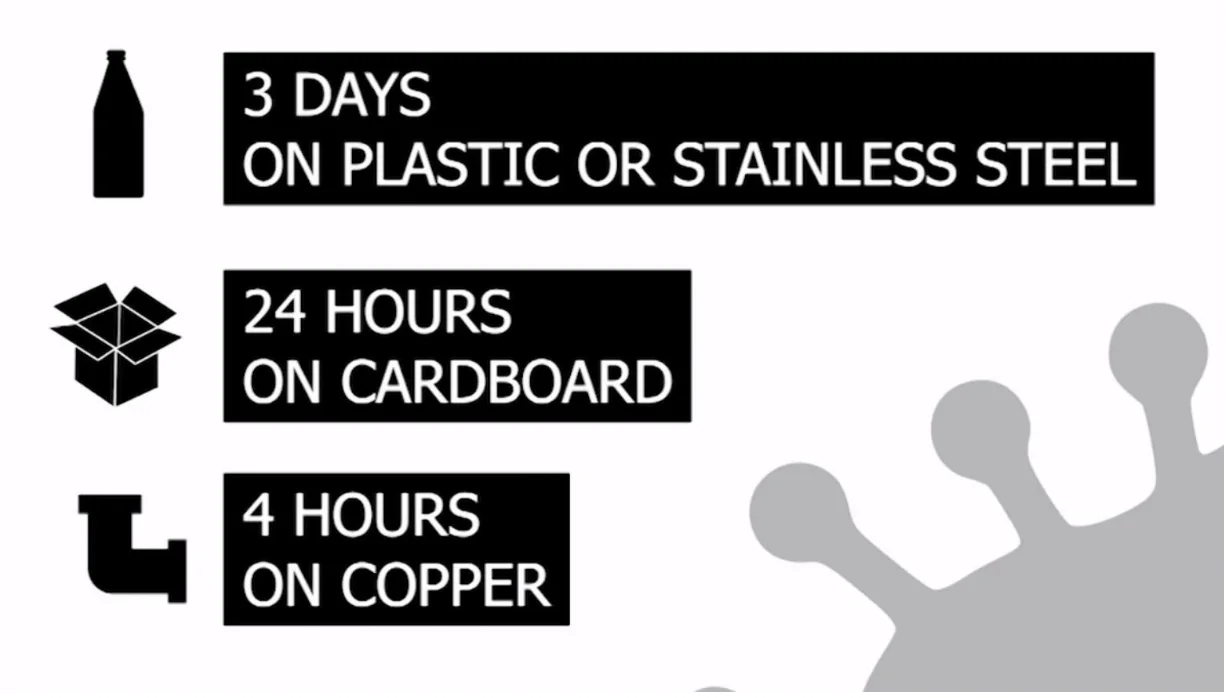
How long coronavirus lasts on surfaces
An infectious disease specialist sheds light on surface transmission and the spread of the coronavirus.
A recent study revealed that coronaviruses (including preliminary information on the COVID-19 virus) may persist on surfaces for a few hours or up to several days.
Since the study was done in a controlled environment, it is important to remember that this does not exactly replicate how the virus thrives and spreads in reality.
Nonetheless, we wanted to explore the idea of surface transmission to see how risky it is.

We asked Infectious Disease Specialist Dr. Chakrabarti his thoughts on spreading the coronavirus through surfaces.
RELATED: These are the riskiest surfaces for coronavirus, researchers say
“Even if there is a virus on a surface, within a few hours the amount of it drastically reduces," he said in an interview that can be seen in its entirety in the video above. "And one other thing, just because you can detect a virus by testing, [it] doesn't mean that it can infect you; Your immune system can do things to prevent it from going into your body.”
It seems like surface transmission is possible, however, not as risky as it may seem. It’s important to remember that the spread comes back to your hands. As long as you are properly washing your hands, surface transmission should be low.

(Courtesy: David Hodge/submitted)
In our conversation with Dr. Chakrabarti, we asked him to comment about surface transmission in a higher risk area like a grocery store.
“Many stores have wipes to clean your cart," explained Dr. Chakrabarti. "I would use that for sure, and hand sanitizer.
"When it comes to the virus being on produce, well you are going to wash that anyways before you eat it. And for boxes and plastic, well I think we need to draw the line somewhere. Again I sound like a broken record, it all comes back to washing your hands properly.”
Surface transmission has been linked to spreading influenza, and yes, it could contribute to the spread of COVID-19. However, surface transmission is not a major contributor to the rising numbers of cases.
“It’s hard to know if a case was caused by someone touching a contaminated surface.' said Dr. Chakrabarti. "We just can't track how people got it in that detail.”
“While surface transmission does happen, the biggest thing is respiratory transmission. This happens when people are relatively close together. And that is why social distancing is so important.”
Be sure to watch the video that leads this article for our full interview with Dr. Chakrabarti.
Go here for our complete coverage of the COVID-19 pandemic
RELATED VIDEO: HOW LONG CORONAVIRUS LASTS ON SURFACES DEPENDS ON THE MATERIAL
Thumbnail image source: Getty Images






